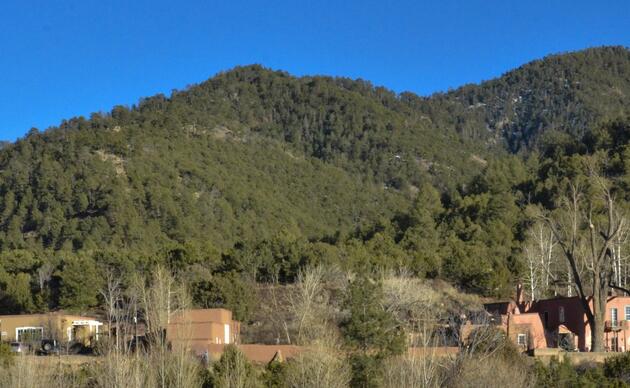Top 10 Bird Plants in Central Arizona
Landscaping with wildlife in mind helps replace some of the habitat lost a result of urban development. Below are a few native plants that will provide vital services to local and migratory bird populations.
1. Ironwood (Olneya tesota)
The Ironwood is an excellent bird sanctuary. It produces pods with seeds that provide a protein-rich resource for birds. Insects abound within it, attracting birds. The Ironwood’s dense canopy has been utilized by nearly 150 bird species, and the shade underneath it can shelter cacti for nesting and wildflowers for foraging. Growing an Ironwood to maturity in your yard greatly increases the number of birds your yard can support.
Birds: Cactus Wren, Mourning Dove, Gambel's Quail
2. Velvet Mesquite (Prosopis velutina), Honey Mesquite (P. glandulosa)
The Velvet and Honey Mesquites are also excellent trees for birds. They provide breeding, nesting, and roosting sites. They are home to insects on foliage, bark, and flowers that attract a wide variety of birds. In addition, their seeds and sweet fleshy pods are eaten by doves, quail, and other birds.
Birds: Verdin, Abert's Towhee, House Finch
3. Prickly Pear (Opuntia species)
Prickly pear cactus offer good escape cover for birds. Some prickly pears produce a juicy fruit in the summer that are prized by many birds, and the flowers attract butterflies and other pollinating insects. Prickly pears are some of the least demanding plants as they can go long periods without water and tolerate very hot locations.
Birds: Cactus Wren, Curve-billed Thrasher, Verdin
4. Desert Marigold (Baileya multiradiata)
Desert Marigold produces bright yellow flowers nearly all year long if watered occasionally during summer. The seeds are eaten by doves, sparrows, and finches. Flower stalks grow up to 18 inches tall and sit above gray-green foliage. It is a short-lived perennial, but reseeds itself well and is very drought-tolerant.
Birds: House Finch, Mourning Dove, Gambel's Quail
5. Blue Palo Verde (Cercidium floridium)
Arizona’s state tree. Bright green or blue-green bark. Seasonal tiny leaves. Spectacular display of yellow flowers in late March or April. Up to 20 feet tall and 25 feet wide. Numerous thorny twigs provide light to moderate shade.
Birds: Verdin, Black-tailed Gnatcatcher, Anna's Hummingbird
6. Desert Willow (Chilopsis linearis)
Narrow green leaves provide light shade. Lavender to pink orchid-like flowers, April through September. Up to 25 feet tall. Sheds leaves in winter, no thorns. Hummingbirds and verdins sip nectar from flowers in late spring and summer; several birds and rodents eat the seeds in late summer and fall.
Birds: Curve-billed Thrasher, Verdin, Anna's Hummingbird
7. Desert Hackberry (Celtis pallida)
Considered a tall, evergreen shrub, the desert hackberry has thick, leathery leaves and produces juicy orange berries in summer and fall. Hackberry branches grow densely and have thorns. Migratory birds love the food and protection this plant provides.
Birds: Northern Cardinal, Abert's Towhee, Black-tailed Gnatcatcher
8. Chuparosa (Justicia californica)
Chuparosa tolerates poor soil and partial to full sun. This hearty plant produces masses of red, tubular flowers prized by hummingbirds and grows to six-feet. In shade, it can become tall and leggy. This perennial plant can lose its leaves in times of drought but stems will remain green. It blooms from fall into winter, and again in spring through early summer.
Birds: Anna's Hummingbird, Verdin, Gambel's Quail
9. Fairy Duster (Calliandra eriophylla)
Low-growing, perennial shrub with unusual, feathery flowers. Deciduous in cold winters. Provides nutritious seed pods as well as nectar.
Birds: Anna's Hummingbird, Mourning Dove, Gambel's Quail
10. Sunflower (Helianthus species)
Well-loved and easy to grow wildflower that delights kids and adults and birds alike. Annual and easy to grow from seed. Can self-seed readily.
Birds: Lesser Goldfinch, House Finch, Northern Cardinal
How you can help, right now
Join the Western Rivers Action Network
Join WRAN to receive action alerts about water issues, as well as issues that are affecting birds across the arid West.
Donate
Help secure the future for birds at risk from climate change, habitat loss, and other threats. Your support will power our science, education, advocacy and on-the-ground conservation efforts.
Nina Mason Pulliam Rio Salado Audubon Center
Visit the Nina Mason Pulliam Rio Salado Audubon Center in Phoenix, Arizona.



